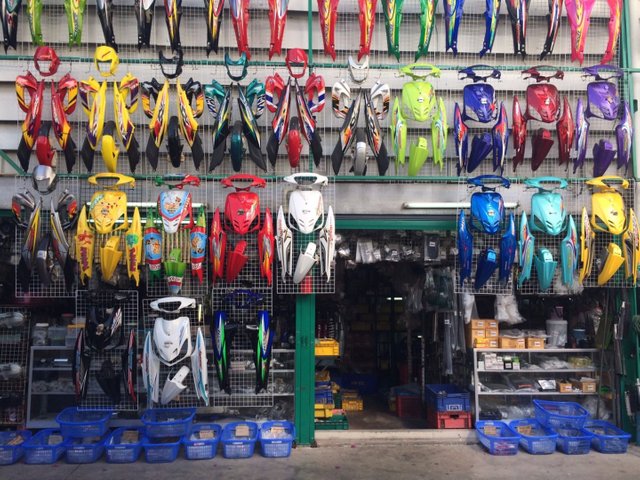Release Efficiency with Costs Motox Parts NZ Available Here
Release Efficiency with Costs Motox Parts NZ Available Here
Blog Article
Grasping Motorcycle Gears: Exactly How to Optimize Your Riding Experience
In the realm of motorcycling, understanding the art of equipment manipulation is critical for improving your riding efficiency. Appropriately making use of and comprehending motorcycle gears can substantially influence control, fuel, and acceleration performance, changing an ordinary adventure right into a seamless, exhilarating journey.
Understanding Equipment Mechanics
At the core of motorcycle characteristics, equipment mechanics play a critical role in converting engine power into movement, inevitably determining rate and control. The gear ratios, thoroughly created, establish the relationship in between engine changes and wheel turns, influencing acceleration and fuel effectiveness.
Understanding gear auto mechanics begins with recognizing the value of the gearbox, which houses multiple gears of differing sizes. These equipments connect via a procedure called meshing, where teeth of various equipments involve to send power. The precision of this communication is essential; any kind of imbalance or damages can result in ineffective power transfer, hindering performance. In addition, the plan and dimension of equipments influence the motorcycle's ability to deal with various lots and rates.
Additionally, the principle of gear moving is important to maximizing performance. Timely and smooth changes make sure that the engine runs within its optimal power band, stopping unnecessary pressure and improving longevity (motocross gear nz). By understanding these mechanical details, motorcyclists can achieve a harmonious mix of effectiveness, control, and power, elevating their riding experience
Timing Your Shifts
Shift timing proficiency is essential for enhancing motorbike efficiency and boosting the riding experience. Properly timed shifts guarantee that the engine runs within its ideal power band, which is critical for preserving control, accomplishing smooth velocity, and making certain the long life of the bike. Riders have to establish an intuitive sense of when to shift equipments, which includes recognizing the connection in between engine changes per min (RPM) and speed.
To master shift timing, pay attention to the engine's noise and really feel, as these supply essential hints regarding when to alter gears. The optimal change factor typically occurs when the engine approaches the upper variety of its power band without reaching the redline. Shifting as well early can bring about a lack of power, while moving far too late may cause unnecessary engine pressure
Additionally, roadway problems and riding style impact shift timing. In comparison, during highway riding, less changes at higher speeds can be extra appropriate.
Enhancing Gas Efficiency
While understanding motorbike gears is essential for performance, improving fuel effectiveness is just as crucial for both environmental and financial reasons. Ideal fuel consumption not only lowers functional costs however likewise minimizes the eco-friendly footprint of riding. To attain this, one should comprehend the intricate partnership in between gear option and engine performance.
To start with, selecting the appropriate gear at ideal speeds can substantially affect gas intake. Riding in a greater gear at lower speeds can result in engine lugging, which is best modular helmet 2022 harmful to both gas economy and engine health and wellness. Alternatively, riding in lower equipments at high speeds leads to unneeded fuel intake. Thus, keeping an ideal balance by changing gears abreast with roadway conditions and prepared for maneuvers is crucial.
In addition, regular maintenance plays a critical role in fuel efficiency. Ensuring that the motorbike is well-tuned, with tidy air filters and correctly pumped up tires, can enhance aerodynamics and reduce gas waste. Embracing a best motorcycle safety gear riding design that embraces gradual acceleration and smooth deceleration can contribute to far better fuel economic situation.

Methods for Smooth Transitions
Accomplishing smooth equipment shifts is essential to improving the riding experience and ensuring the durability of a motorcycle's transmission system. Appropriate equipment shifting not just adds to a smooth adventure but likewise minimizes damage on the mechanical parts. To understand the art of smooth changes, cyclists must concentrate on a few essential methods.

Second of all, clutch control plays an essential duty. Involving and disengaging the clutch efficiently needs practice. The clutch bar must be launched gradually, enabling a seamless transfer of power from the engine to the wheels without triggering a shock or abrupt movement.

Adapting to Roadway Problems
Browsing diverse roadway problems is a crucial skill for any kind of motorcyclist aiming to keep control and security. Whether you're riding on wet surface areas, gravel roads, or browsing sharp turns, your capability to adapt your gear use and riding strategy is critical. Recognizing exactly how to adjust your gears appropriately can dramatically impact grip and stability, making certain a much safer journey.
In contrast, when riding on crushed rock or unequal terrain, lower gears are preferable. Reduced gears give better control and enable you to react even more promptly to unanticipated changes in the roadway surface.
Sharp contours require precise equipment management to stabilize speed and control. Downshifting before going into a contour can assist maintain momentum while making sure the motorcycle stays stable throughout the turn. Constant technique in varied problems boosts your capability to react and forecast to adjustments in road texture and incline.
Final Thought
Grasping motorbike gears dramatically boosts the riding experience by boosting acceleration, control, and fuel efficiency. A thorough understanding of gear auto mechanics and accurate change timing ensures the engine operates within its optimum power band, while smooth changes through efficient clutch and throttle control increase comfort and performance. Adapting gear choice to numerous roadway problems, such as utilizing greater equipments on damp surface areas and lower equipments on crushed rock, further enhances handling and safety and security. Eventually, these skills raise the general trip.
Recognizing gear auto mechanics begins with identifying the relevance of the gearbox, which houses numerous gears of varying sizes. These gears communicate with a procedure recognized as meshing, where teeth of various equipments involve to send power (motorcycle shop). Gentle modifications to the throttle throughout equipment changes can avoid jerky movements and keep a constant riding speed
Whether you're riding on wet surfaces, crushed rock roadways, or navigating sharp turns, your ability to adapt your equipment usage and riding technique is paramount. Adjusting gear option to numerous roadway problems, such as utilizing greater equipments on wet surface areas and reduced equipments on gravel, more enhances handling and safety and security.
Report this page